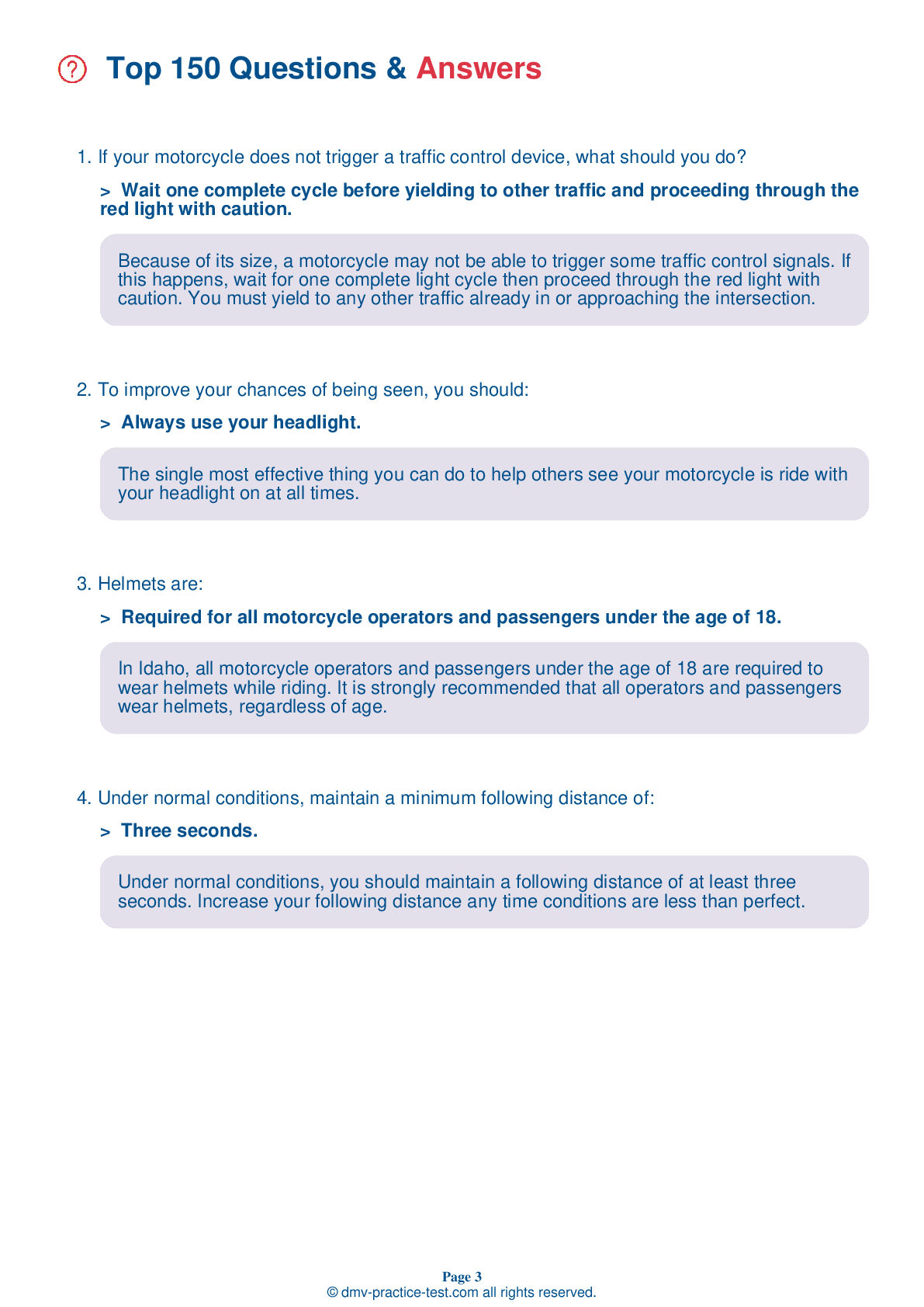Motorcycle Test | License ID 2025 | FREE Online Practice! #6
Take this FREE motorcycle test (license in ID 2025) to check your knowledge of the road rules. To improve your results, download a motorcycle handbook online, study theory, and practice for free on our website. Still worried about how to get a motorcycle license in Idaho in 2025? Check our website for more sample tests, train as much as possible, and boost your grades!
1 . When approaching a blind intersection, riders should:
When approaching a blind intersection that is controlled by a stop line or stop sign, you must first stop where indicated. You may then edge forward and stop again just short of where the cross traffic lane meets your lane. From that position, lean your body forward and look around buildings, parked cars, or bushes to see if anything is approaching. Make sure your front wheel stays out of the crossroad while you are looking.
2 . This road sign means:

This sign indicates a low ground railroad crossing. Where this sign is present, railroad tracks cross the road at a steep slope and the bottom of low vehicles may drag or get caught on the tracks.
3 . Riding under the influence of any medication which impairs your riding is permitted:
Many prescription and non-prescription drugs can impair the safe operation of motor vehicles. You should never operate a motor vehicle on any roadway with any trace of a controlled drug, substance, or intoxicating compound in your blood.
4 . Which of the following surfaces is unlikely to provide poor traction for motorcyclists?
A number of surfaces can provide poor traction for tires. Wet pavement; roads covered in loose gravel or sand; muddy, snowy, or icy areas; painted lane markings; and metal covers and plates in the road can be more hazardous for a motorcyclist than dry pavement.
5 . It is recommended that you take a curve by beginning on the outside of the curve, moving to the inside of the curve, and exiting on the outside of the curve. An alternate option is to:
If there is no traffic present, it is recommended that riders take a curve by beginning on the outside of the curve, moving to the inside of the curve, and exiting on the outside of the curve. An alternate option is to start the curve in the center of the lane and remain in the center throughout the curve. Be aware of changing road and traffic conditions and adjust as necessary.
6 . When braking, you should:
Use both brakes every time you slow or stop, regardless of the condition of the road.
See the exact questions that will be on the 2025 Idaho DMV exam.
99.2% of people who use the cheat sheet pass the FIRST TIME
Jeneen was tired of paying $5/gallon. She got herself a scooter that required the motorcycle license. She studyed the motorcycle test cheat sheet and passed her test the next day!
Christopher tells us how he knew nothing prior to obtaining the motorcycle study guide, and he only got one question wrong because he clicked on the wrong answer by mistake.



